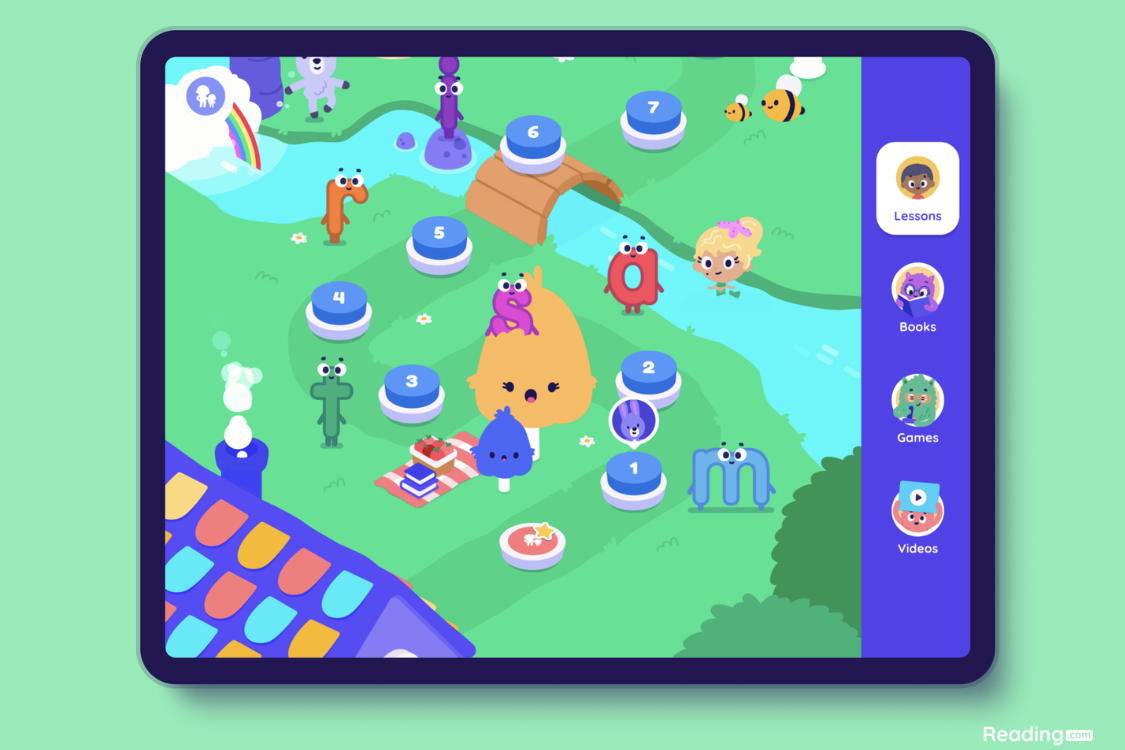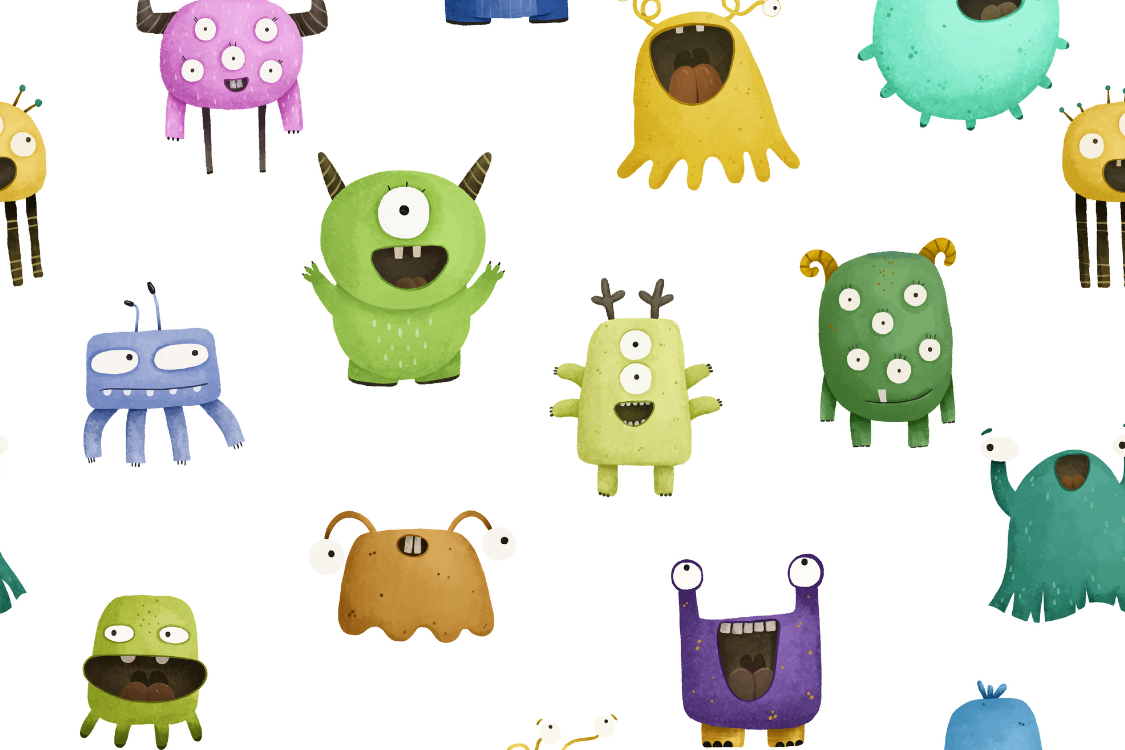Khan Academy Kids Review for Learning to Read
Khan Academy Kids is a resource for children ages 2 to 8. It provides a diverse range of educational content free of charge and without ads.
Phonics.org provides literacy app reviews so you can make more informed choices for your students and kids. For an in-depth Khan Academy Kids review and exploration of the popular learning app, read on!
While the Khan Academy app covers various subjects, this review focuses on the literacy features.
Positive Aspects of Khan Academy Kids: Learning!
There are a lot of great things about the Khan Academy Kids app. Let’s take a look.
Learner Engagement
Activities in this app are attainable and enjoyable for children. Visually, the app is a delight, with smooth animations and vibrant graphics that capture the imagination. The “Super Simple Songs” videos add an extra layer of entertainment and fun to the learning experience.
This app has a reward system of collecting points to unlock accessories and costumes for the characters in the game. This aspect of the app doesn’t seem necessary but is unlikely to be too distracting from the educational aspects of the game.
Usability
Khan Academy Kids offers a user-friendly experience. Users can engage with the app via two distinct pathways:
- A map with lessons to explore step-by-step
- A ‘Library’ with a selection of all lessons organized by subject and grade
Navigation within the app is intuitive and allows for easy exploration and gameplay. The option to repeat instructions within the games enhances accessibility. However, the inclusion of a scope and sequence outlining letter and phonics skills would further benefit educators and parents in tracking children’s progress and aligning learning objectives.
Direct Instruction
Direct and explicit instruction is a positive feature of Khan Academy Kids. This type of instruction happens through engaging videos featuring characters within the app. These instructional segments offer concise and clear explanations of various topics.
Some of these instructional videos explain foundational concepts that are often overlooked. For example, the app explains many concepts of print, such as the parts of a book, how to turn pages, and the difference between a letter and a word. The ability to rewatch these instructional videos at any time supports memory and recall of important ideas.
Content Area Books
The digital library within Khan Academy Kids is a standout feature. This library offers a diverse selection of content that includes fiction and nonfiction books.
Users can choose between having the book read aloud to them or reading the book to themselves.
Some examples of book categories in the app include:
- Dinosaurs
- Community Helpers
- National Geographic: Young Explorer
- Women Leading the Way
- Spanish Stories
This diversity in topics is appealing to many early readers and their specific interests.
Practice Important Vocabulary
Khan Academy Kids excels in vocabulary development. The app begins by introducing ‘basic concepts’ which are vocabulary words that are crucial for understanding directions and fundamental for overall learning. This approach ensures that children grasp essential vocabulary from the outset, setting them on a solid path toward reading comprehension.
Letter Sounds
Khan Academy Kids delivers accurate and consistent instruction with letter sounds. Through various engaging activities, the app provides multiple avenues for children to practice and reinforce their understanding of letter sounds.
This comprehensive approach ensures that young learners develop a solid foundation in phonics, a crucial skill that forms the basis of early literacy and language acquisition.
Phonological Awareness
In Khan Academy Kids, phonological awareness receives ample attention, particularly at the kindergarten level. Children engage in abundant practice with rhyming, syllabication, and blending sounds. A focus on developing these skills can be essential for learning to read and spell words.
Room for Improvement in Khan Academy Kids: Learning! App
There are some aspects of this educational app that need improvement. Let’s focus on the biggest ones.
Letter Formation
Khan Academy Kids offers letter formation activities as part of its curriculum, but it falls short in accuracy for certain letters. Some letter formations taught in the app do not align with standard practices used by teachers or occupational therapists. Improving the accuracy and consistency of letter formation within the app could mitigate confusion for young students as they develop their handwriting skills.
Decoding (Word-Reading) Practice
One of the most important features of a learning-to-read app is direct instruction and practice in sounding out words. Khan Academy mainly relies on word families to teach children how to sound out words. This can be a helpful approach but is often less effective than simply blending individual sounds to read a word.
Many of the sound blending activities in Khan Academy Kids are great but would be better with the inclusion of letters in some of these activities. Opportunities to see or practice sounding out a word with its individual sounds are few and far between in this app.
Sight Words
In Khan Academy Kids, sight word instruction—or what might more accurately be termed high-frequency word instruction—is incorporated into the learning curriculum. These often irregularly-spelled words are introduced in groups of four or so and children are encouraged to do activities that require memorization of a whole word.
The best way to remember high-frequency words is to sound them out whenever possible. Words like ‘had’ and ‘him’ follow basic phonics rules and should be sounded out. Trying to memorize them by appearance is unlikely to help with word recall; especially when so many words are introduced at the same time.
Decodable Books
In Khan Academy Kids, there are limited decodable books available, primarily found at the kindergarten level. Decodable books have words that kids can sound out due to prior phonics knowledge.
However, the use of these books in the app will not fully leverage their potential. During lessons, the children experience decodable books as read-alouds, bypassing opportunities for them to practice phonetic decoding.
Additionally, the option to read the books independently is not prominently featured in the books. This represents a significant missed opportunity to engage children in active reading, where they could practice sounding out words and phrases independently, thus reinforcing their phonics skills and fostering greater reading fluency.
Is the Khan Academy Kids App Good for Phonics Instruction?
A close look at the Khan Academy Kids: Learning! App shows that it offers a wealth of educational resources for young learners. The engaging content, digital library, and instructional videos contribute positively to the learning experience.
However, the app does have its shortcomings. While it excels in areas like vocabulary development and language comprehension, there are notable areas that require improvement.
The letter formation activities could benefit from greater accuracy and alignment with standard practices. Also, the reliance on word families over individual phonetic decoding in word reading may limit its effectiveness. The limited availability and underutilization of decodable books represent missed opportunities for improving reading confidence and fluency.
Despite its strengths, there is room for Khan Academy Kids to enhance its approach to certain aspects of literacy instruction to better support young learners in their reading journey.
For more detailed reviews on literacy apps, explore phonics.org for informed decision-making regarding educational resources for children or students.
Khan Academy Kids: Ratings
- Quality of Literacy Instruction: 2.5/5
- Usability: 4/5
- Engagement: 4/5














